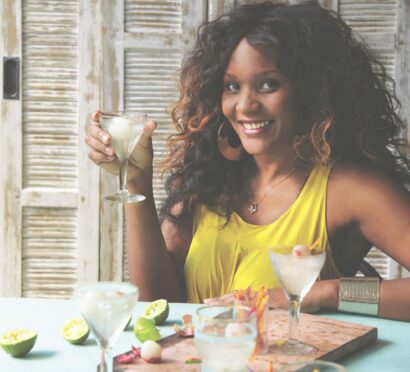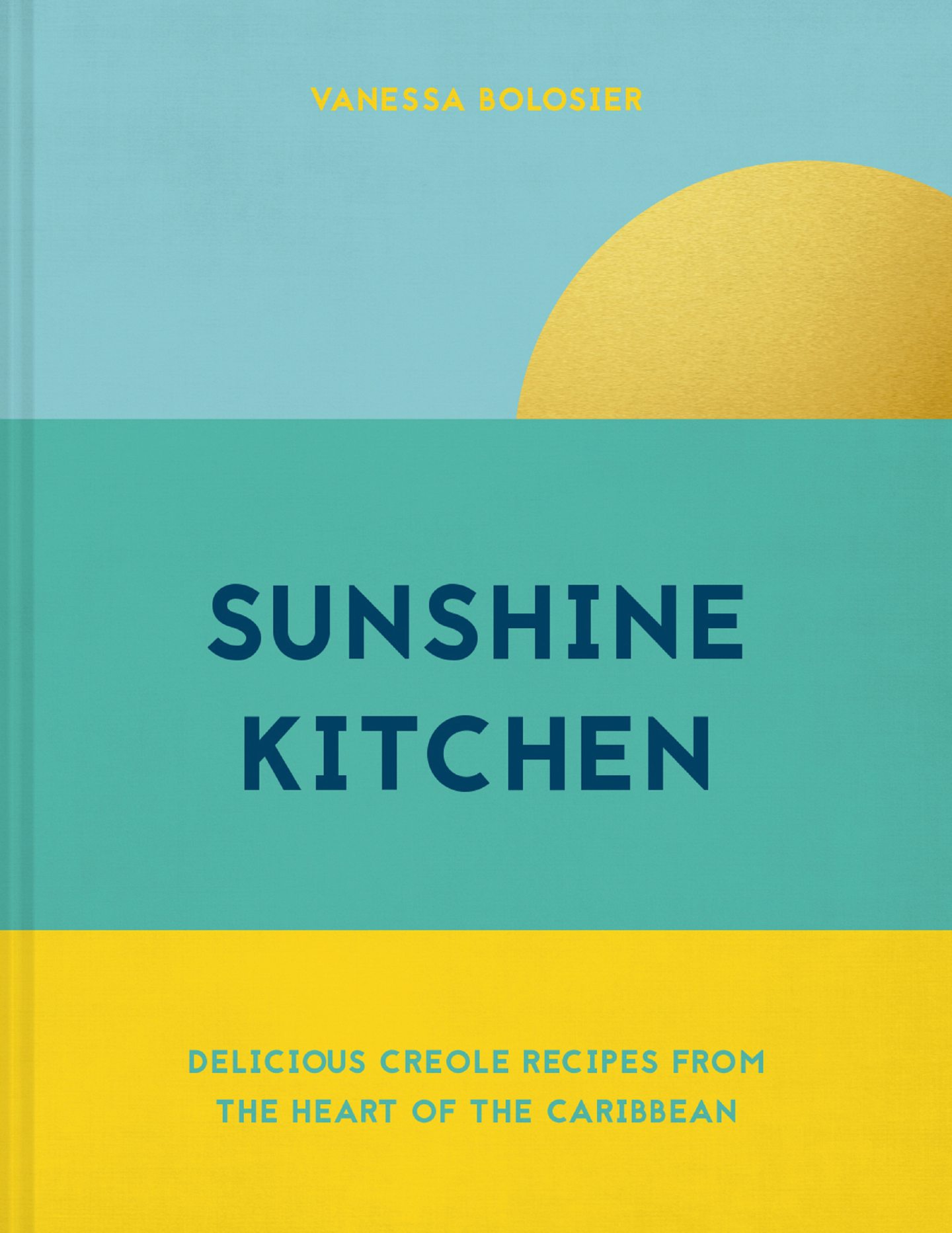
If ever you find yourself caught in the gnarled pincers of a crab, you will wish you had food writer and supper club host Vanessa Bolosier by your side.
“I know how to escape,” she explains, sagely. “You have to press their eyes and they’ll release you; growing up I had all the training, good home training.”
Bolosier grew up on French Caribbean islands Guadeloupe and Martinique, and it was her father who taught her crustacean husbandry. In the weeks before Easter they’d farm crates of live crabs in preparation for dishes of callaloo and matete (spicy rice with crabmeat). She recalled: “We’d feed them not only chillies, but spring onions, garlic, thyme, and the flesh is different. It’s slightly softer. It’s tasty. It’s the same way if you feed your animals organic, beautiful grass, or you feed them grain – it won’t taste the same.”
Having been based in London for 16 years, her cookbook, Sunshine Kitchen, came from her experience of not finding the regional variety of Caribbean food in Britain that she was raised eating.
Bolosier, 37, says: “When it comes to Caribbean food, generally everything is lumped together and often the assumption is that it’s food that originates from Jamaica.
“The people that migrated to the UK were people of Jamaican origin, in majority, whereas in France, for instance, migration from French Caribbean islands has been more common. Some of the ingredients and spices, they’re the same, but the application of them is different.”
Factor in access to funds and how difficult the restaurant industry can be, and showcasing regional varieties gets even tougher.
However, street food traders and supper clubs are helping.
Sunshine Kitchen shares Vanessa’s version of Creole Caribbean food; one that draws on the way her parents and grandparents cooked, traditional dishes from Guadeloupe and Martinique, with a few contemporary angles and tweaks that reflect her own style.

Ask her to describe Guadeloupe and Martinique, and she can do it in one gleeful word: “Paradise!” Defining Caribbean Creole is trickier. She said: “That’s a problem as it’s Creole Caribbean, but you’ve got Creole from Louisiana, you’ve got African Creole. So it’s all about fusion. These cultures will be beautiful; they collapse into something that makes it even more beautiful. To me, Creole is the collision of histories and migrations into a plate, with a French touch.”
As a result, her cookbook doesn’t work without the history section that precedes the recipes.
“It’s very important for people to understand the sort of ambivalence that happens in the Caribbean, especially on French islands that are still very much French governed.
“There is an ambivalence in the Caribbean, just generally, because of history that has very, very unfortunate and sad elements to it from the moment it was discovered, until now. But out of all of that has come such an amazing culture.
“It’s very difficult to explain to people, for instance, why nose-to-tail eating is so big in the Caribbean, because if I just gave you one of these recipes and you saw the ingredients – pig’s tails, tripe, etc – you’d be like, ‘Oh my, this is disgusting. No, I will not eat that’, but not if you understand where that comes from, and how that has been flipped on its head and how it’s been embraced, and how it’s celebrated now.”
Vanessa learnt much of her own ancestry from her late father in the kitchen at the same time he was teaching her cooking skills, from picking ingredients from the garden, to scaling fish.
She said: “He was a very serious man, but the kitchen was kind of a confessional for him; the only time he would relax and smile and laugh and share stories.
“He loved his grandmother, she was native Caribbean, and she taught him so much that he wanted to pass that down.”
Throughout Sunshine Kitchen – a reformatted issue of her 2015 cookbook Creole Kitchen – Vanessa happily admits the dishes are “not sexy on the plate”. With a hearty laugh, she adds: “To this day, people don’t understand why I’m not an Instagrammer. I try, but it’s big bowls! And a lot of it is brown, a lot of it is red and a lot of it is yellow.
“It’s not sexy food, but it is delicious food and it’s food that people just dig in and get at together.”
Sunshine Kitchen: Delicious Creole Recipes From The Heart Of The Caribbean by Vanessa Bolosier, published by Pavilion Books, priced £12.99. Photography by Clare Winfield

Enjoy the convenience of having The Sunday Post delivered as a digital ePaper straight to your smartphone, tablet or computer.
Subscribe for only £5.49 a month and enjoy all the benefits of the printed paper as a digital replica.
Subscribe